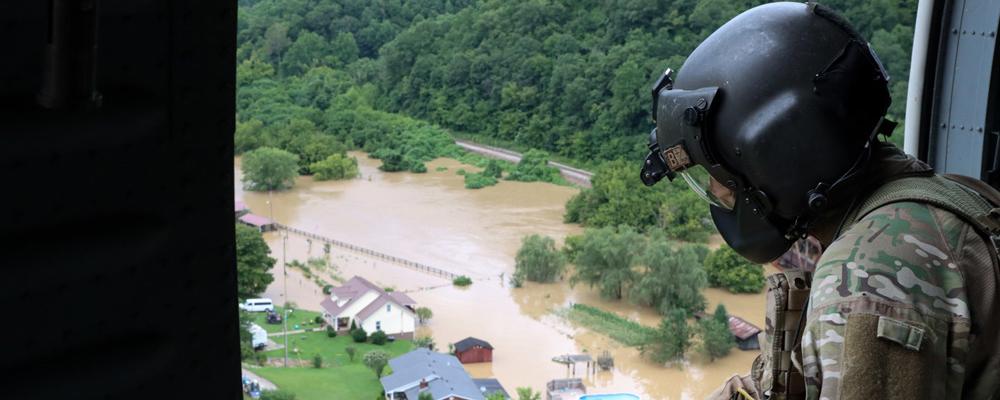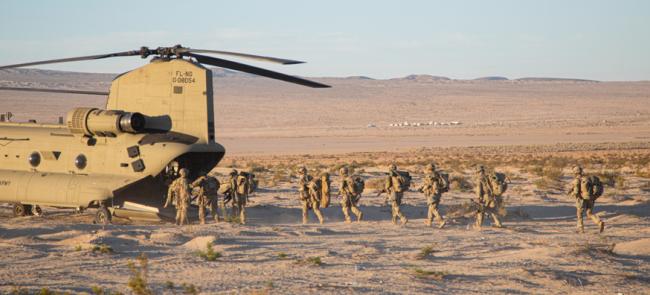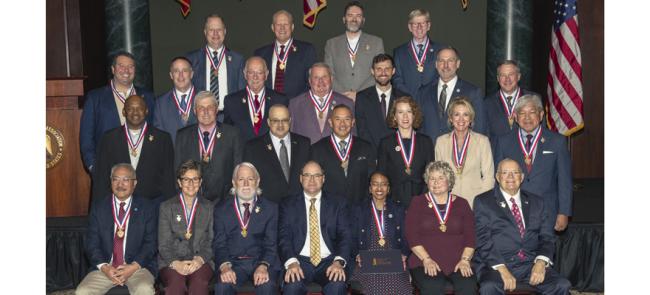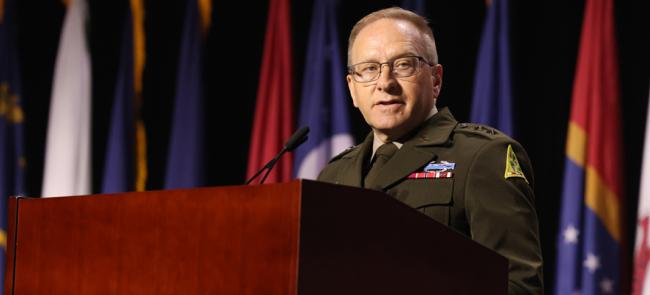
Big Help From Above
National Guard soldiers and airmen from three states plucked more than 500 people from rising floodwaters in eastern Kentucky as July gave way to August.
Many worked around the clock with civil agencies after rain and severe flash flooding threatened many residents in the rural counties of Kentucky’s Central Appalachia region.
Kentucky officials issued an emergency declaration July 28 and activated the Guard. Tennessee and West Virginia Guardsmen joined the effort shortly thereafter under an Emergency Management Assistance Compact among the states.
EMAC offers assistance during governor-declared states of emergency or disaster through a responsive, straightforward system that allows states to send personnel, equipment and commodities to assist with response and recovery efforts in other states.
The Kentucky Guard’s Army Aviation Support Facility commander, Lt. Col. Steve Martin, said as soon as pilots assessed the severity of the situation — standing water several feet deep with people stranded on their rooftops — they knew it would be an all-out charge to save lives.
“We’ve put every aviation resource we had against it to include calling in Tennessee and West Virginia, who responded immediately,” Martin said. “They were critical in aiding in life-saving measures across eastern Kentucky and we could not have done it without them.”
He said Kentucky Guardsmen recently conducted a dynamic-hoist training exercise that big paid big dividends during the flood response. In this rescue method, a medic or crew chief is lowered while the aircraft is still on approach.
“This has been a game-changer for us,” Martin said, “in expediting our response time and increasing the safety for everyone on board as well as the person that we’re trying to help.”
Sgt. First Class Jeremy Lowe, a critical care flight paramedic with Detachment 1, C Company, 2nd General Support Aviation Battalion, 238th Aviation Regiment, was one of those at the end of the hoist from a UH-60 Black Hawk.
Lowe helped evacuate residents for five days. On the first day of flooding, he was able to help a man clinging to a tree to escape the rising water.
The man had been in the tree for hours and was ready to let go when Lowe and his crew arrived. Lowe freed the man and he was flown to an airport in Hazard, where civilian paramedics took over.
“We went back out for a different victim in a different tree about a half mile up water,” he said. “When we got that victim out and to the airport, the first victim I hoisted was her husband. So I was able to reunite them.”
Guard helicopter crews also dropped food and water to people cut off by the flooding.
The multistate, interagency flood response was built on experience gained from previous natural disasters in the state, said Maj. Gen. Hal Lamberton, the adjutant general, who also oversees the Kentucky Emergency Management Agency.
After tornadoes laid waste to parts of western Kentucky in December 2021, he directed the Kentucky Guard to establish a uniformed Guardsmen to serve as a liaison and work with each of the state’s 120 county emergency managers.
“Enabling the local folks to know more of what the Guard can bring to it came about because of our history of responding to like events,” Lamberton said.
The 123rd Special Tactics Squadron, one of only two units of its kind in the Air Guard, is one of the unique resources the Kentucky Guard brings during an emergency. Squadron members patrolled flooded areas in boats and boots to seek any citizens who were stranded or displaced.
Master Sgt. Rudy Parsons, a pararescue team leader, or PJ, said the Guard could not do it alone, and the interagency cooperation has been extremely valuable.
As part of his role as a PJ, Parsons is also a K-9 handler. The Kentucky Guard is home to the only search-and-rescue dog in the Defense Department: Callie, a five-year-old Dutch Shepherd, with another in training, Pits, a 10-month-old Belgian Malinois.
Callie helped locate several people, which led to their rescue. She also found the bodies of others, including four children who were siblings.
“We had a debrief afterwards and we all just kind of mentioned how at least we were able to bring closure to the families because...I can’t imagine the pain they’re going through having lost all four of their children,” Parsons said.
—By Sgt. 1st Class Zach Sheely & Staff Sgt. Andrew Dicks



